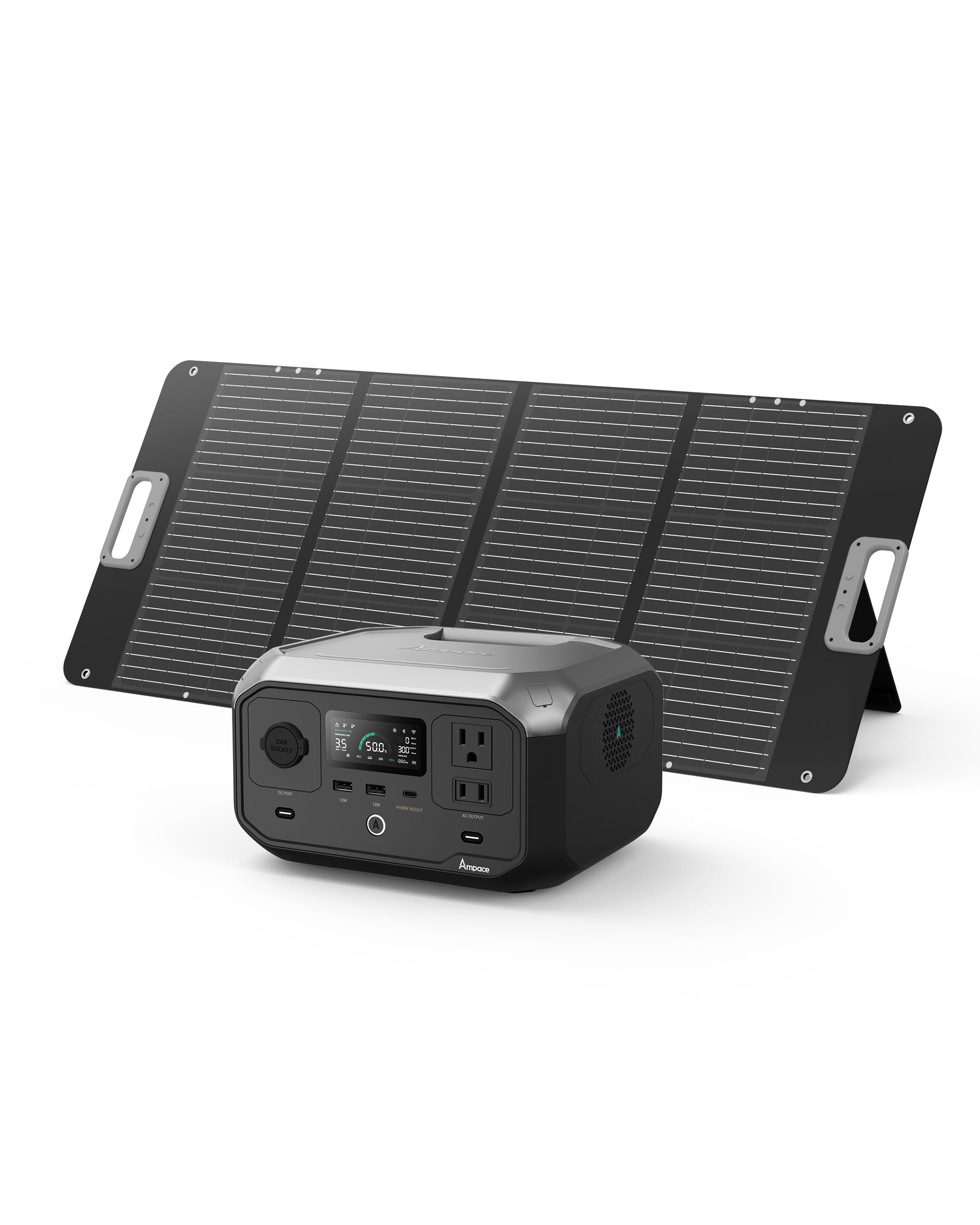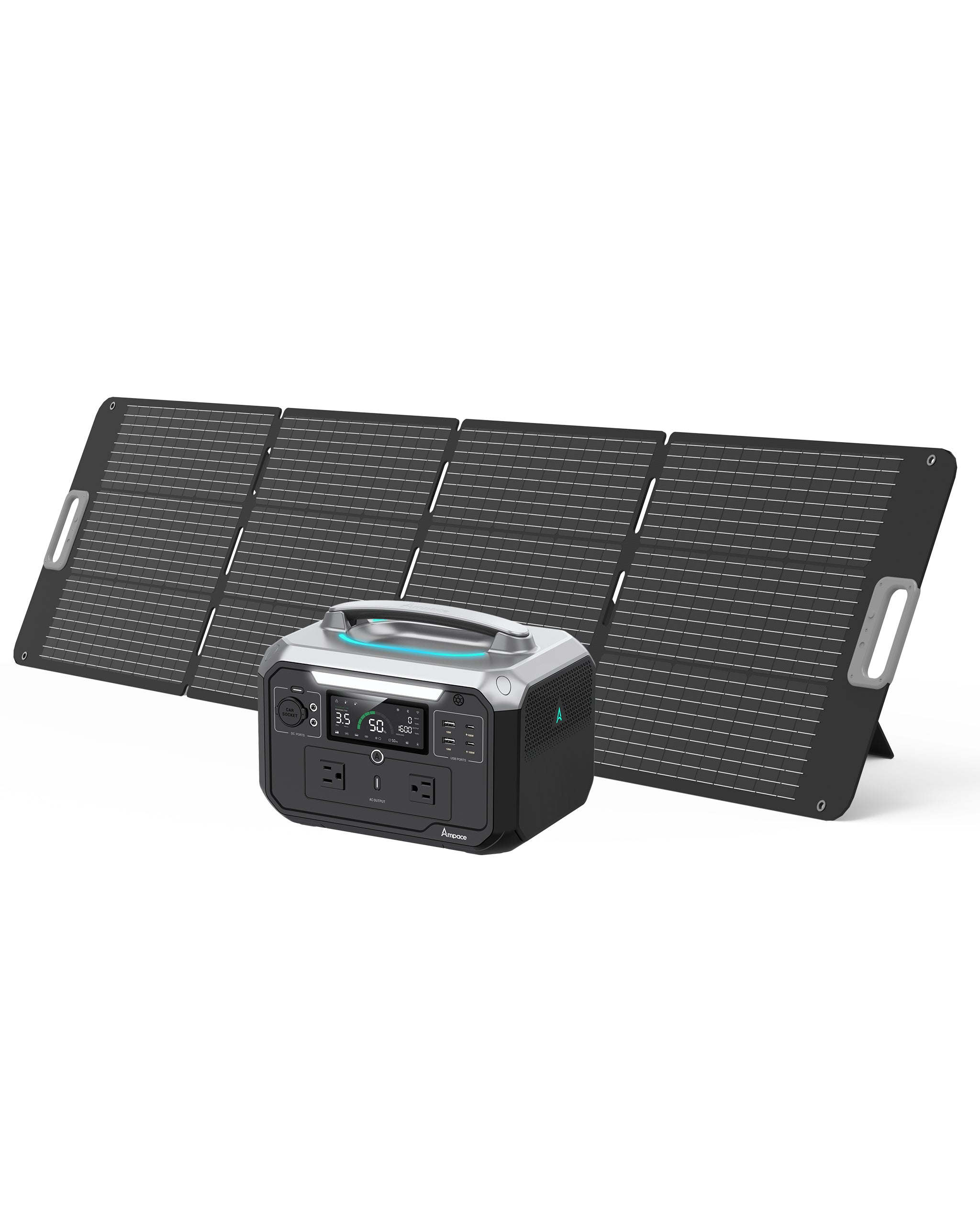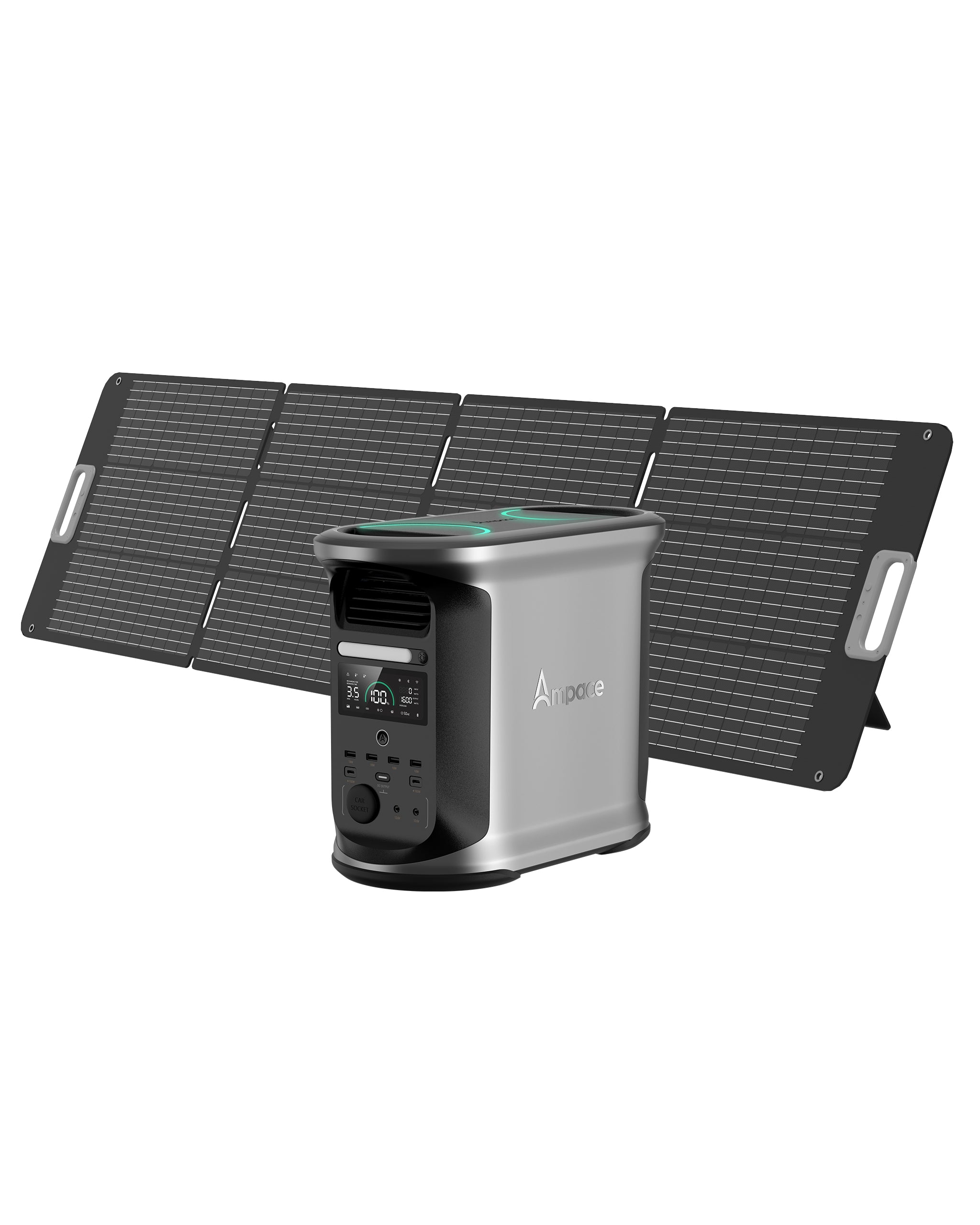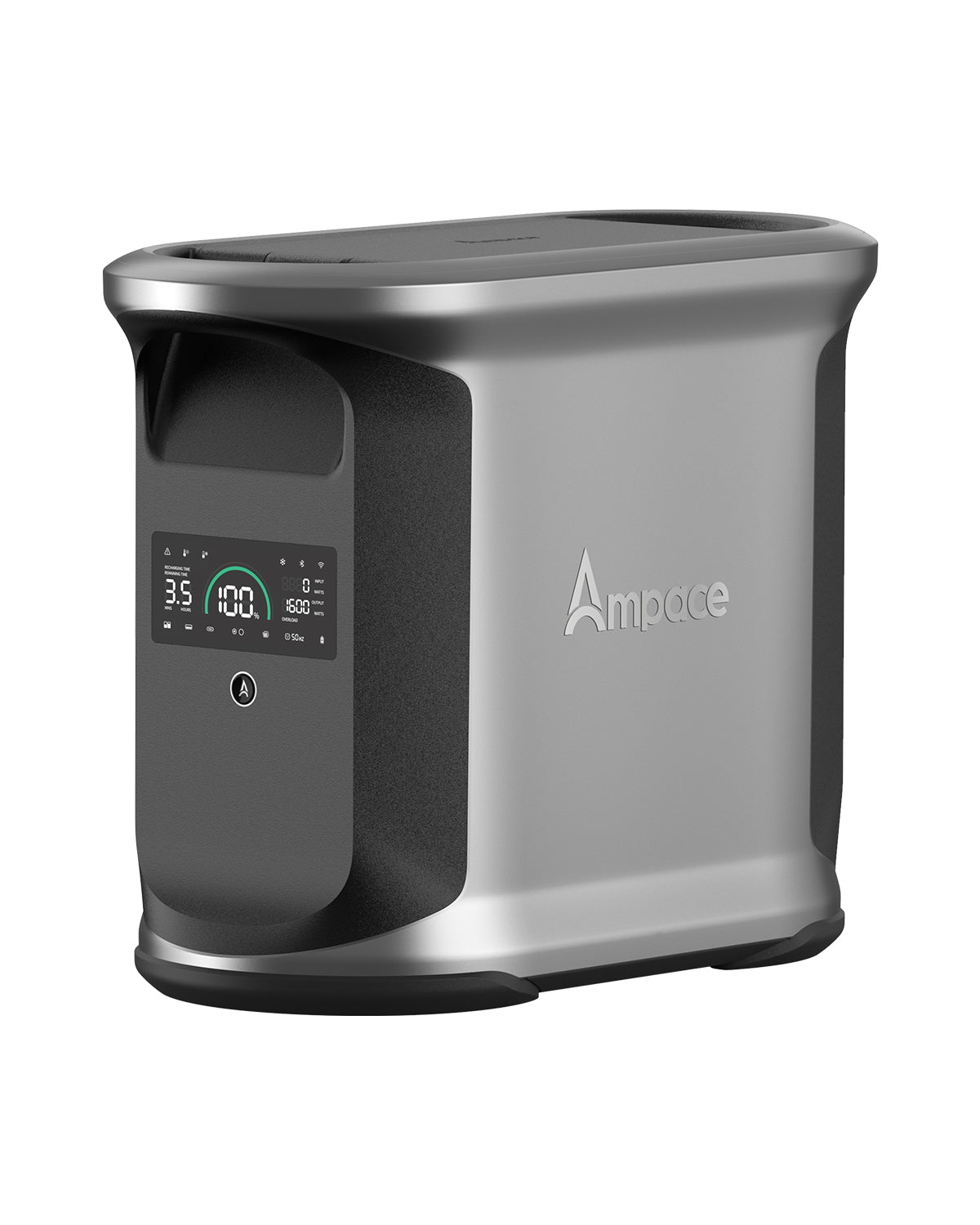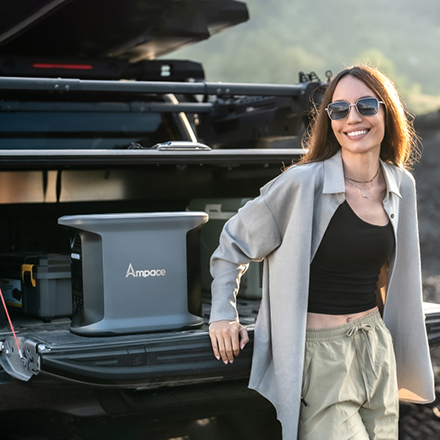Power Backup

Power Backup
 Ampace - 2024-07-15
Ampace - 2024-07-15
The latest portable power station from Ampace is leading the pack in advanced battery cell technology
Power when and where you need it. The Ampace Andes 1500 redefines the portable power by offering rapid charging, extended cycle life, and comprehensive safety protections.
When you purchase through links on our site, we may earn an affiliate commission. Here's how it works.
(Image credit: Ampace)
We utilize power sources in nearly every aspect of daily life, but we don’t often stop to think about the technology that keeps the juice flowing through our favorite devices. Thankfully, Ampace has been a leading expert in the development of battery cells and home energy storage, not only thinking about the energy storage we need but also innovating and improving upon it. With its latest portable power station, Ampace introduces high-performance, commercial-grade battery cells to its consumer product line for the very first time. The Ampace Andes 1500 portable power station unites fast charging and a long battery cycle life with cutting-edge safety technology.
Experts leading the charge in battery cell technology
(Image credit: Ampace)
Ampace’s high-quality, LFP battery cells are backed by 20 years of experience by Ampace’s parent companies, with a rich history of R&D and production of mid-size lithium-ion batteries. Ampace has inherited advanced technology from its parent companies—Amperex Technology Limited and EV battery giant CATL—to power everyday items like home appliances, Teslas, and E-motorcycles to create groundbreaking new home energy storage solutions.
The premium battery cells within these devices, appliances, and even electronic vehicles play pivotal roles in enhancing product performance and user experience, notably in terms of reliability, longevity, safety, and charging speed. This holds equally true for portable power stations, where battery cells are the primary component without any exceptions.
High-quality LFP battery cells like the ones found in the Ampace Andes 1500 are IP-55 rated, UL-certified, puncture-resistant, non-flammable, and resistant to high temperatures. You never know exactly what kind of situation you’ll find yourself in when the need for supplemental home energy strikes. Ampace's self-developed Battery Management System ensures that your Andes 1500 portable power station is safeguarded against issues that can prevent you from having power when you need it most. The Battery Management System’s safety warning algorithm ensures that you and your loved ones are safe when using the Andes 1500 portable power station, detecting and warning of any potential battery risks in advance.
Ampace’s cutting-edge battery cells and BMS technology are not only applied in portable power stations, they are also utilized in commercial storage solutions. Ampace recently unveiled its groundbreaking all-in-one C&I Outdoor Energy Storage Series at EES Europe 2024, featuring the industry’s first Zero Liquid Cooling and Zero Conditioner technology that further maximizes customer’s energy ROI. These advancements in energy storage technology are made possible by Ampace’s efforts to introduce advanced solutions in the energy storage domain.
Advanced features that are safe and reliable
(Image credit: Ampace)
The impact of Ampace’s efforts to bring reliable, safe, commercial-grade battery cell technology to the residential space culminates in the Ampace Andes 1500 portable power station. The Andes 1500 portable power station is an exceptional solution for homeowners in need of backup or supplemental power during emergency or severe weather events. With a capacity of 1462Wh and 13 versatile points, the Andes 1500 is ready to provide a charging solution for all of your devices. Backed by a 3600W surge power and Ampace’s A-Turbo technology, the Andes 1500 is capable of charging emergency radios, smartphones, and lanterns and even powering 99% of appliances up to 3600W.
Of course, the need for backup home power solutions rarely arises at the best of times. The Ampace Andes 1500 power station is capable of providing a stable power output in extreme temperatures as low as -20°C/-4°F and can be fully charged in as little as 55 minutes—half the time of comparable power stations. And with 6000 charging lifecycles—typically twice that of comparable power products on the market—the Andes 1500 is an investment in reliable power storage that will be ready whenever you need it most.
Ready to improve your storage? The Ampace Andes 1500 will be available on july12 on the official Ampace online store, as well as on Amazon for $1399. invest insafe, reliable home storage from Ampace between july 12 and july 31 and takeadvantage of early bird pricing, saving $400 off the retail price. Additionally,.customers who subscribe to the Ampace Newsletter can receive a total discountof $500.
Amazon shoppers can also look forward to a sizable deal in celebration of PrimeDay from july 15th to july 21st, when the Andes 1500 will be on sale for a $400 discount.
 Ampace - 2024-07-15
Ampace - 2024-07-15

Power Backup
 Ampace - 2024-01-31
Ampace - 2024-01-31
Ampace Technology Powers Up CES 2024 with Cutting-Edge Andes Portable Power Stations
January 9, 2024 – Brace yourself for a green energy revolution at CES 2024! Ampace Technology, a global leader in innovative energy solutions, is electrifying the show with its latest breakthrough: the Ampace Andes series of portable power stations. Powered by cutting-edge battery technology and an advanced self-developed Battery Management System (BMS), these powerhouses redefine portable power, offering unrivaled performance, reliability, and portability for all your needs.During CES 2024, visitors will have the opportunity to explore Ampace's impressive portfolio of portable power solutions, including the highly anticipated Andes 600 Pro and Andes 1500. These portable power stations offer unrivaled performance, fast charging capabilities, and exceptional durability, making them the ultimate companion for outdoor enthusiasts, professionals in the field, and anyone seeking reliable power on the go.
Ampace Andes 600 Pro & Andes 1500
Unleash Your Inner Explorer with Andes
Imagine venturing deep into the wilderness, capturing breathtaking landscapes with your drone, and fueling your campsite lights – all without worrying about running out of power. The Andes series makes this dream a reality, empowering outdoor enthusiasts with:
Unmatched Portability: Lightweight and compact, making them ideal for hiking, camping, and off-grid adventures.
Rugged Durability: Built to withstand the elements, they can handle bumps, drops, and even extreme temperatures, ensuring reliable power wherever you roam.
Exceptional Capacity: Charge multiple devices simultaneously, from your smartphone and camera to even larger tools like laptops and portable projectors.
Fast Charging Technology: Minimize downtime with lightning-fast charging speeds (0% - 80% in 1H), getting back to your adventures even quicker.
Beyond the Outdoors: Powering Professionals and Everyday Life
Ampace understands that reliable power extends beyond the wilderness. The Andes series caters to diverse needs, including:
Field Professionals: Stay productive on construction sites, remote locations, or during fieldwork with consistent, dependable power for your essential equipment.
Always Prepared: Be ready for unexpected outages or emergencies with a backup power source that keeps your home, office, or essential medical devices running smoothly.
Sustainable Solution: Embrace a greener future with Ampace's commitment to clean energy solutions, reducing reliance on fossil fuels and minimizing environmental impact.
The Ampace Advantage: Innovation and Expertise
Ampace doesn't just boast power; it boasts a legacy of innovation and trust. Backed by the combined expertise of industry giants ATL and CATL, our parent companies leverage over 20 years of cutting-edge cell technology and innovation. This dedication is evident in:
Global leader in consumer-grade lithium-ion batteries and pioneer in of e-vehicle batteries respectively
Over $215.7 million invested in R&D in the past four years: Pushing the boundaries of green energy solutions.
A portfolio of more than 900 patents: Protecting advancements and ensuring industry leadership.
Asia's largest laboratory: Demonstrating a commitment to continuous innovation and quality control.
Over 35 million users in 29 countries: Building trust and empowering individuals globally.
 Ampace - 2024-01-31
Ampace - 2024-01-31

Power Backup
 Ampace - 2022-11-24
Ampace - 2022-11-24
What are lithium-ion batteries? How are they compared?
A Lithium-ion or Li-ion battery is a type of rechargeable battery that uses the reversible reduction of lithium ions to store energy. A Lithium-ion battery is typically made up of lithium phosphate (LFP), Lithium nickel manganese cobalt oxide (NMC), nickel cobalt aluminum oxides(NCA), Lithium Cobalt Oxide (LCO), Lithium Manganese Oxide (LMO), etc. This section will focus on lithium iron phosphate battery and the ternary lithium battery.
What is lithium iron phosphate (LiFePO4) battery
The lithium iron phosphate (LiFePO4) battery is a type of lithium-ion battery using lithium, iron, and phosphate as the cathode material, all of which can be sourced easily and sustainably as there are an abundancy of these resources on earth. It has a nominal voltage of 3.2 volts, and it can be sufficiently charged to a longer lifespan. The olivine structure of LiFePO4 helps achieve its high temperature sustainability. However, the energy density and low temperature capability is lower. Thus, LiFePO4 battery is usually used on vehicles with less requirement on energy density.
A ternary battery is mainly composed of nickel, cobalt, manganese or nickel, cobalt, and aluminum. Both nickel and cobalt are rare metals, and the earth's stock is finite, resulting in a higher price point for these resources. The working voltage of a ternary lithium battery is high and the energy density and low temperature capability is higher due to its higher lithium diffusion rate and electron mobility. Ternary lithium batteries are usually applied to vehicles or mobile batteries.
From the prospective of cell enclosure, there are three main types of lithium-ion batteries: cylindrical cells, prismatic cells, and pouch cells.
1: Cylindrical cells
Cylindrical cells are generally packaged in a steel shell with the advantages of relatively good consistency and safety. Also, the production process of cylindrical lithium battery is now entering into the mature stage, with high production efficiency, yield rate and a relatively low cost. Although with a good heat dissipation, the design of the battery pack is difficult and the power density is lower. Cylindrical cells are commonly found in medical devices, laptops, electric bikes, and power tools.
2: Prismatic cells
Prismatic cells are a rectangular shape and this allows to efficiently stack multiple units in a battery module. They have a simple structure with relatively great power density and good stability. On the other hand, the market has many different types of prismatic lithium batteries, making make it difficult to unify the process. The monomers are quite different, and there may also be groups of prismatic lithium battery packs that are far less than the life of a single lithium battery. they are better suited for energy-intensive applications such as electric vehicles and mass energy storage systems.
3: Pouch cells
Pouch cells are soft packed with lithium polymers, with the advantages of a higher power density, smaller internal resistance, and a longer cycle life. While, the disadvantage is that lithium polymers are of low production efficiency and yield rates, which makes it more suitable for small and medium-sized storage system and consumer electronics applications.
Conclusion
Each type of lithium-ion battery has its respective pros and cons, and it cannot be replaced by the other types. Thus, there are different types of lithium-ion batteries in the market.
Considering the pros and cons of different types of lithium-ion batteries, Ampace made a calculated decision to apply a soft aluminium coating, achieving a balance among safety, size and weight on small/medium-size storage devices to meet the needs of being an adequate size while having high safety and being lightweight. Ampace adopted the LiFePO4 Hybrid System, combing the advantages of LiFePO4 and a ternary lithium battery. In addition, it contains Olivine molecular structure and Spinel molecular structure simultaneously. This helps to achieve not only the same safety as a LiFePO4 battery, but also higher power density than a traditional LiFePO4 battery. The Ampace battery can deliver 80% of its rated energy under the circumstance of -20°C and it can still be charged while the temperature drops to -10°C. Ampace succeeds in creating batteries that are suitable for all kinds of environments.
 Ampace - 2022-11-24
Ampace - 2022-11-24
Page 7 of 7





